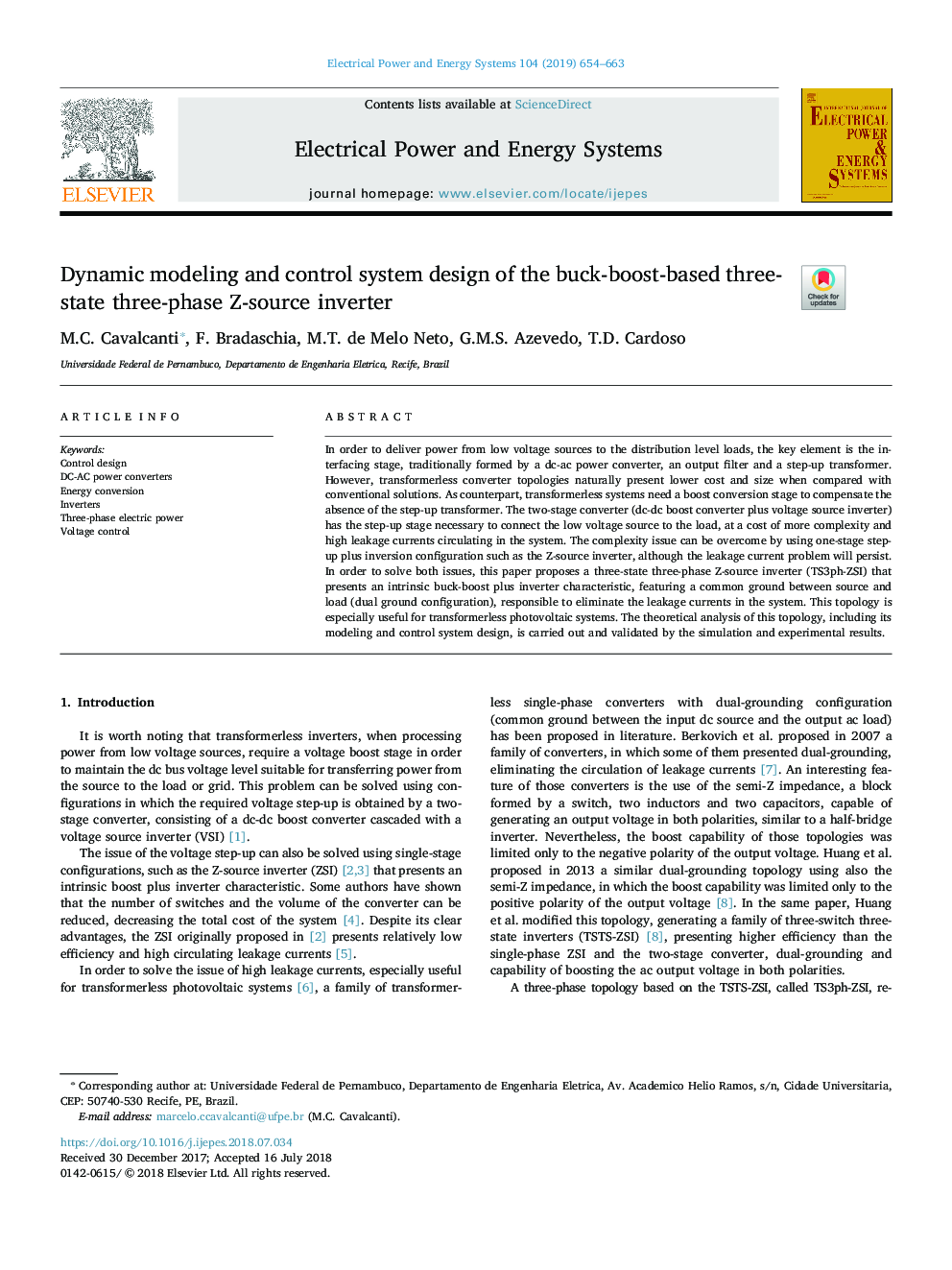| Article ID | Journal | Published Year | Pages | File Type |
|---|---|---|---|---|
| 6859113 | International Journal of Electrical Power & Energy Systems | 2019 | 10 Pages |
Abstract
In order to deliver power from low voltage sources to the distribution level loads, the key element is the interfacing stage, traditionally formed by a dc-ac power converter, an output filter and a step-up transformer. However, transformerless converter topologies naturally present lower cost and size when compared with conventional solutions. As counterpart, transformerless systems need a boost conversion stage to compensate the absence of the step-up transformer. The two-stage converter (dc-dc boost converter plus voltage source inverter) has the step-up stage necessary to connect the low voltage source to the load, at a cost of more complexity and high leakage currents circulating in the system. The complexity issue can be overcome by using one-stage step-up plus inversion configuration such as the Z-source inverter, although the leakage current problem will persist. In order to solve both issues, this paper proposes a three-state three-phase Z-source inverter (TS3ph-ZSI) that presents an intrinsic buck-boost plus inverter characteristic, featuring a common ground between source and load (dual ground configuration), responsible to eliminate the leakage currents in the system. This topology is especially useful for transformerless photovoltaic systems. The theoretical analysis of this topology, including its modeling and control system design, is carried out and validated by the simulation and experimental results.
Related Topics
Physical Sciences and Engineering
Computer Science
Artificial Intelligence
Authors
M.C. Cavalcanti, F. Bradaschia, M.T. de Melo Neto, G.M.S. Azevedo, T.D. Cardoso,
